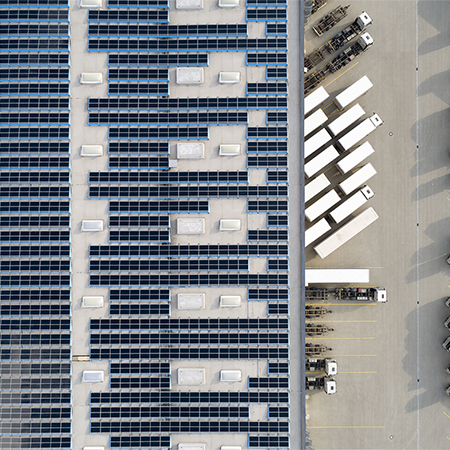Logistics is at the top of many shopping lists. However, investors need to think laterally to find opportunity and value.
The pandemic has been a catalyst to the digital economy worldwide, pushing the e-commerce share of retail up in all markets. Logistics is vital to servicing that demand. Post-Covid-19 estimates suggest that online retail spend in Western Europe is going to increase €442 billion by 2025. Every additional €1 billion of online sales creates demand for an average of 75,000 sq m of warehouse space, which suggests that by 2025, an additional 33.2 million sq m of demand would be created by the online retail sector in the region.
With these fundamentals, investor sentiment is very strong. However, there is an undersupply of modern logistics assets. Much of the supply is in the hands of global or regional developer-managers such as Prologis, GLP or Crow Holdings. These companies have large land banks and produce a huge amount of stock, but they rarely sell it, unless to one of their own real estate investment trusts.
Lack of available stock has sent logistics yields to an all-time low. Real Capital Analytics data shows average global logistics yields are now 5.8%, only 30 basis points above office yields and lower than retail yields. In developed markets, yields are much lower; in Tokyo, for example, they are below 4%. However, for investors who do not wish to bid for contested assets, or who lack the scale to partner with a logistics developer, there are emerging niches within the wider sector that offer more opportunity and higher yields.
Growth areas
Cold storage is a specialised part of the supply chain, utilising temperature-controlled warehouses for the storage and transportation of food or medical supplies, such as vaccines. A Research & Markets report estimates that $7.9 billion was invested globally in developing cold storage warehouses last year, which will grow to $19 billion in 2027, fuelled by demand for online grocery shopping and reducing food waste. Globally, more stringent ESG targets are looking to the food supply chain to reduce food waste, which in turn fuels demand for cold storage. For investors, cold storage offers yields that are 50-100 basis points above dry logistics facilities and, due to the high cost of fit out, tenants are happy to sign long leases.
Consumer demand for rapid delivery has increased the need for last-mile logistics warehouses, located nearer to the customer. For example, in Paris, SEGRO is developing a 75,000 sq m underground urban logistics centre at the former Gobelins station.
The universe of industrial space keeps on broadening, too. The growth of video-streaming services has led to content producers such as Netflix and Apple taking warehousing space to use as film studios. The need for more studio space is driving demand for warehousing in existing media cities such as London, Los Angeles and New York.
Meanwhile, booming video conferencing and cloud computing means demand for data centres is growing all over the world, and new data centre funds were launched for China by Gaw Capital Partners, and for Asia and Europe by Keppel Group.
There is also set to be new demand for manufacturing space in mature markets, as companies diversify supply chains and respond to demands for ‘reshoring’ of manufacturing, especially as automation is increasingly offsetting higher labour costs.
An ever-changing sector
Finally, we shouldn’t assume that trends are set in stone. E-commerce will not grow at the same rate as during 2020, while in some markets there is a backlash emerging. In the UK, there are calls to rebalance competition between Amazon and high-street retailers by raising business rates on warehousing space. The #boycottamazon hashtag appears frequently on social media in the US, and in China, antimonopoly regulators landed Alibaba with a $2.8 billion fine.
Online retail has faced criticism for the sheer quantity of packaging it generates, and deliveries produce carbon emissions, half of which come from the last mile. Forrester estimates 20% of online purchases are returned, and US reverse logistics operator Optoro estimates 25% of returns are destroyed or end up in landfill.
Concerns about the environment or the size and power of global online retailers will not derail e-commerce, but they are likely to lead to retailers reorganising their logistics to minimise deliveries or to accommodate recycling, which will change the type of space they demand.



